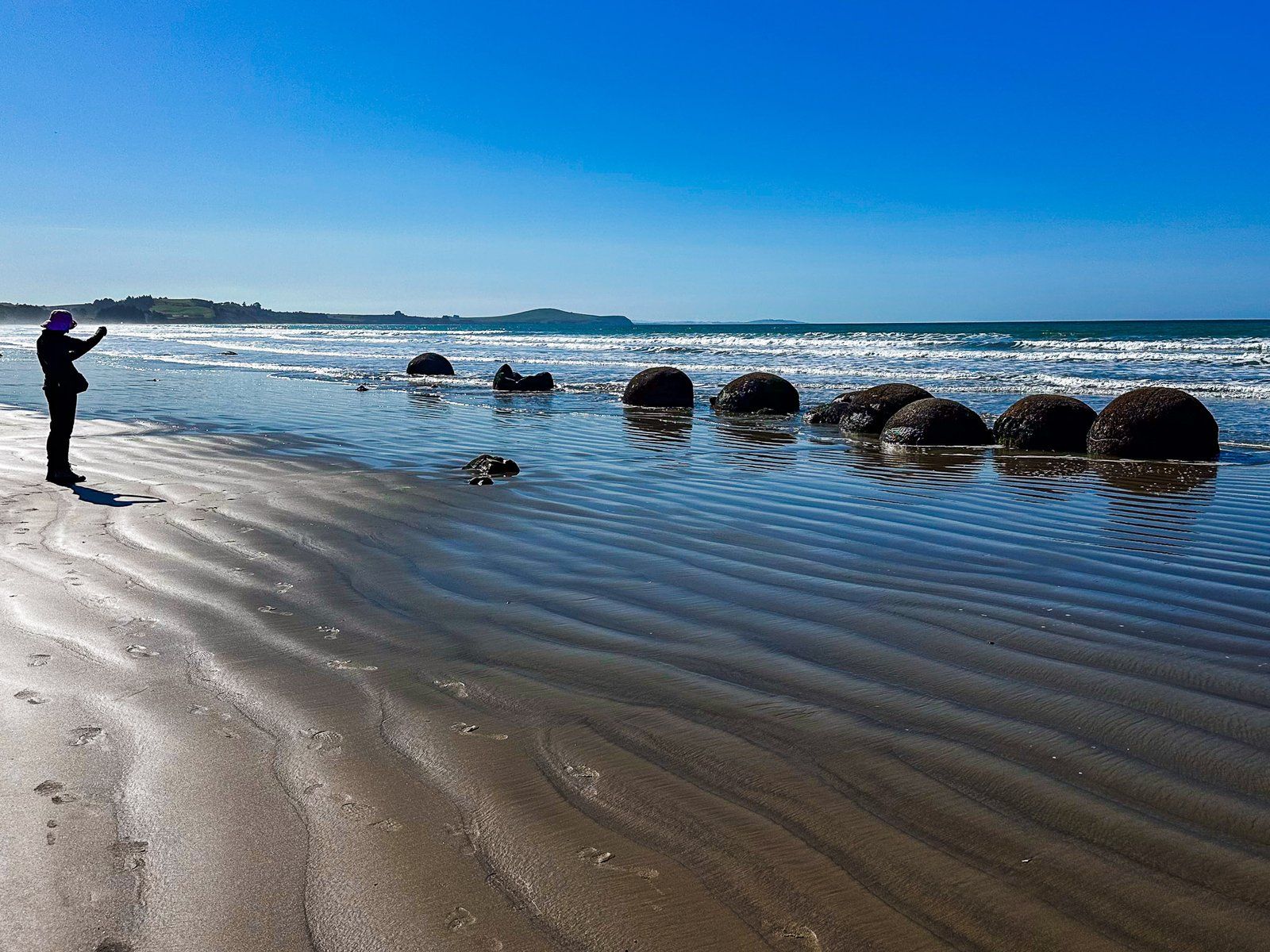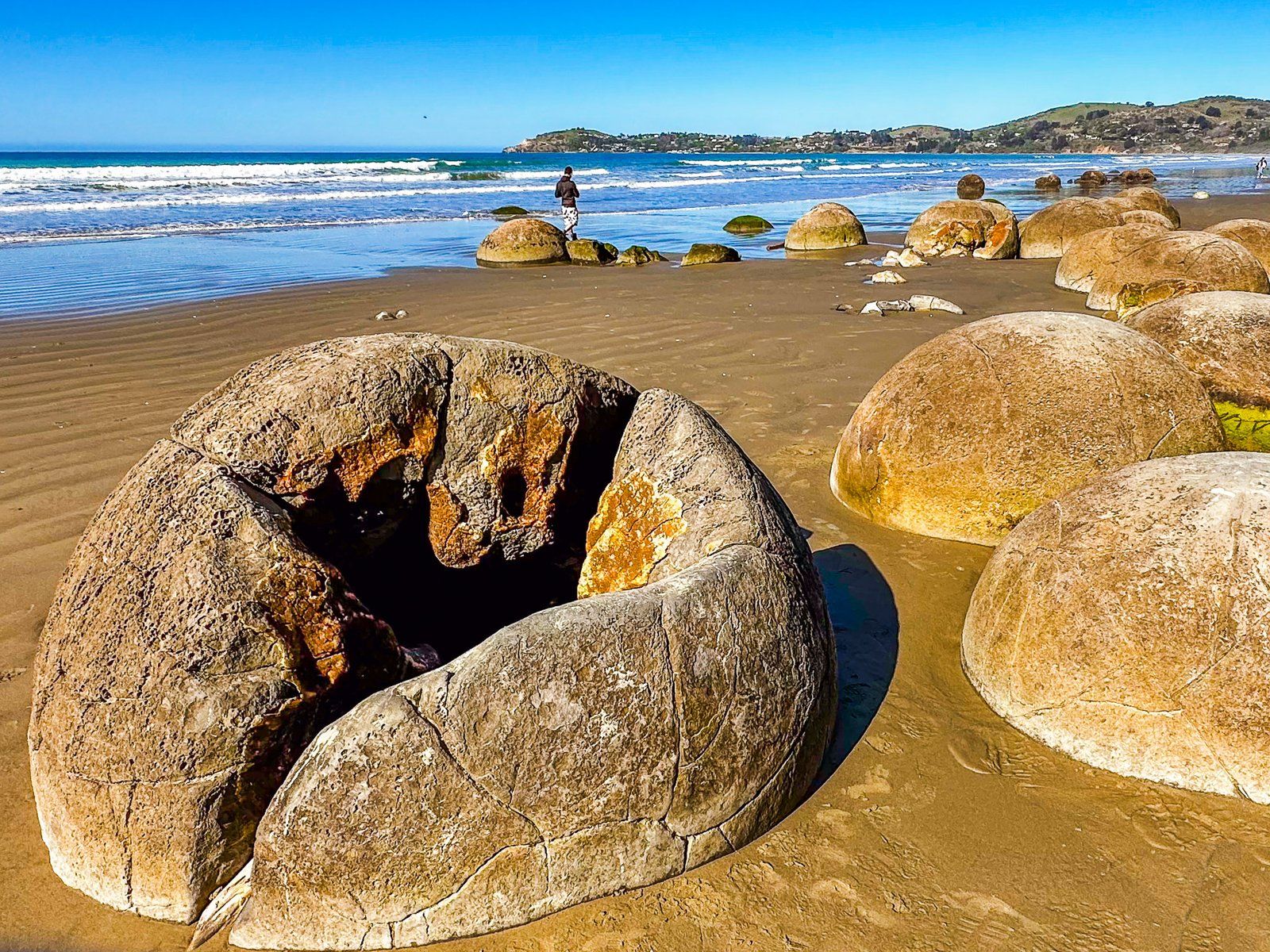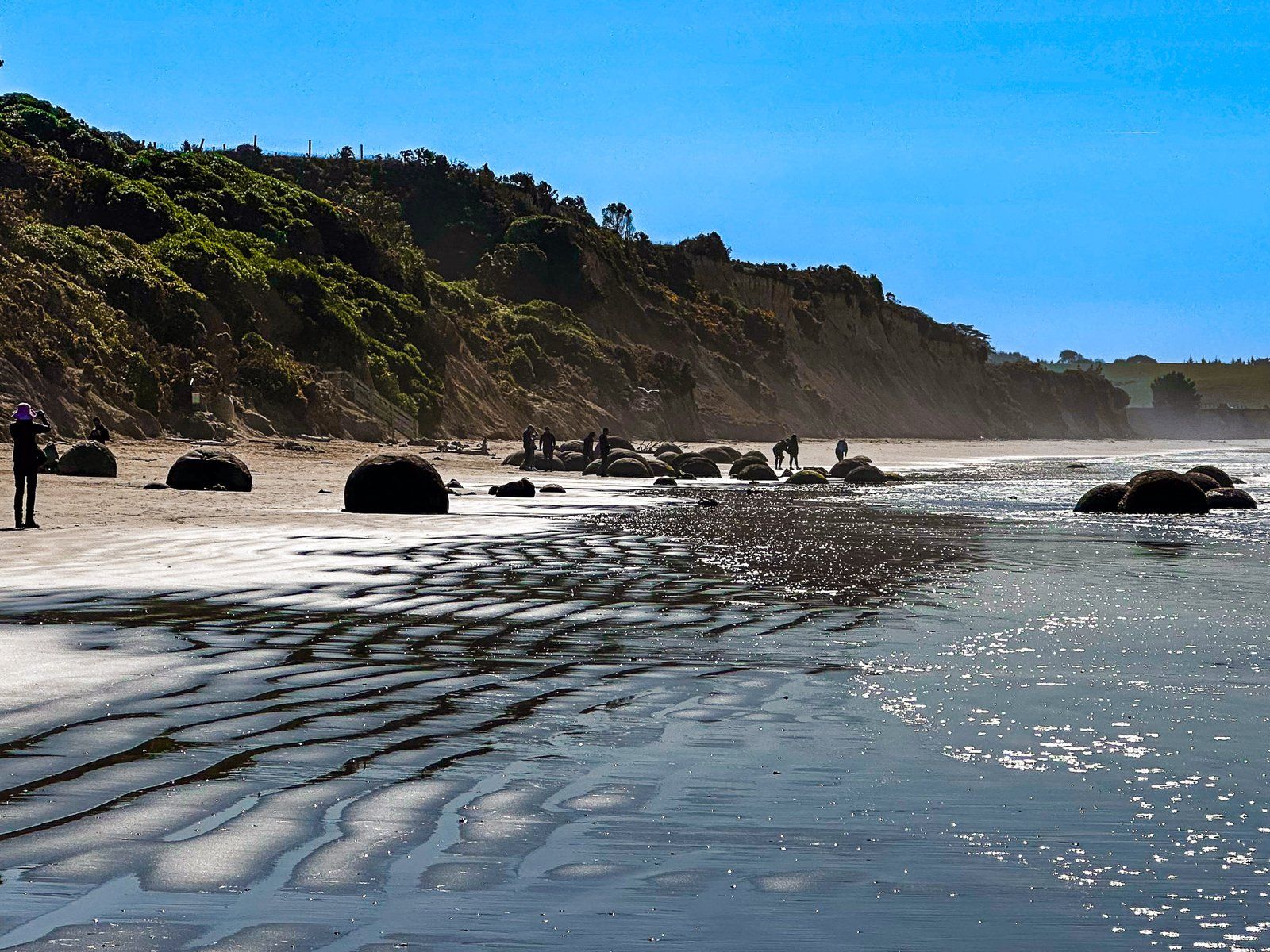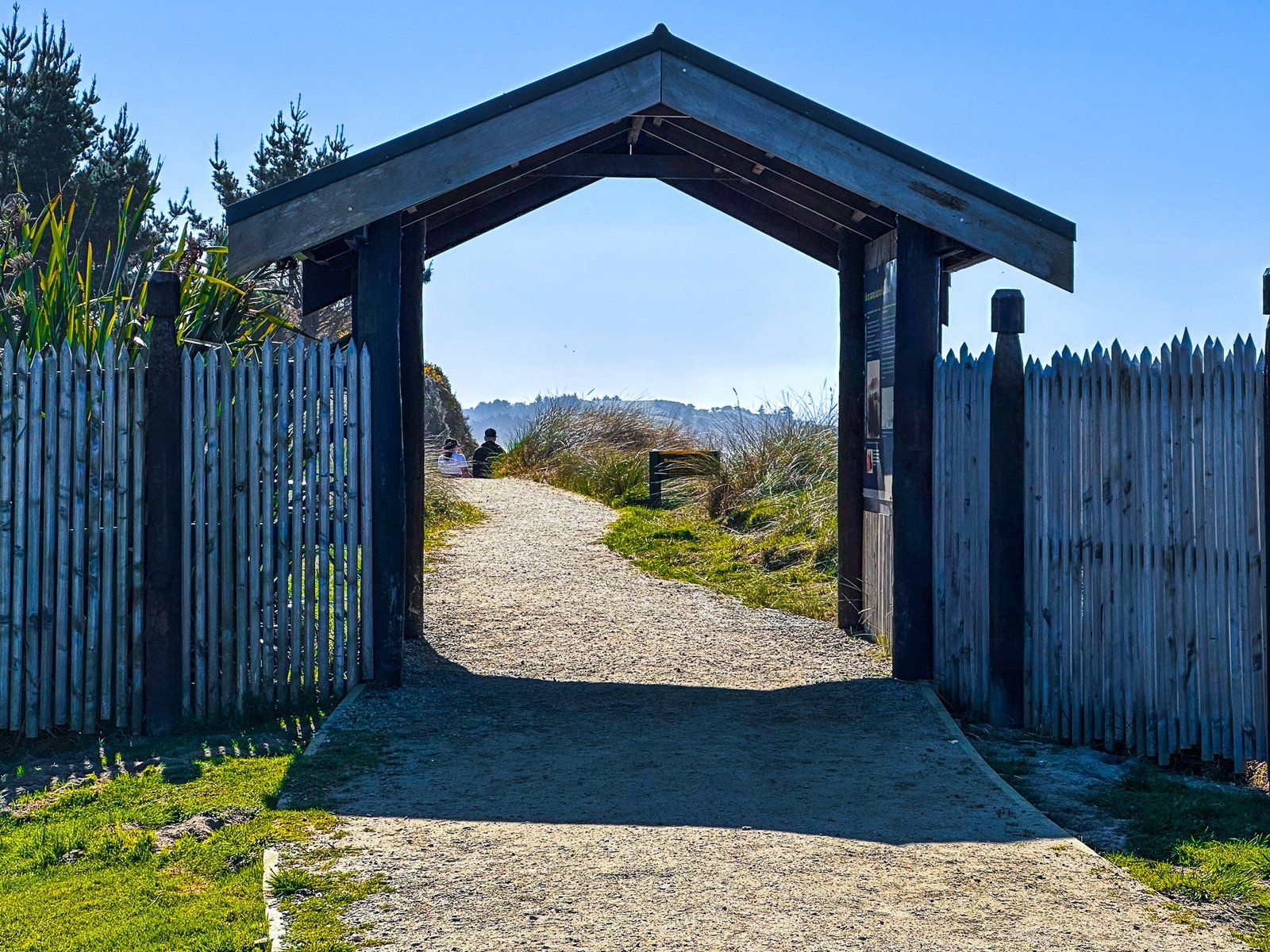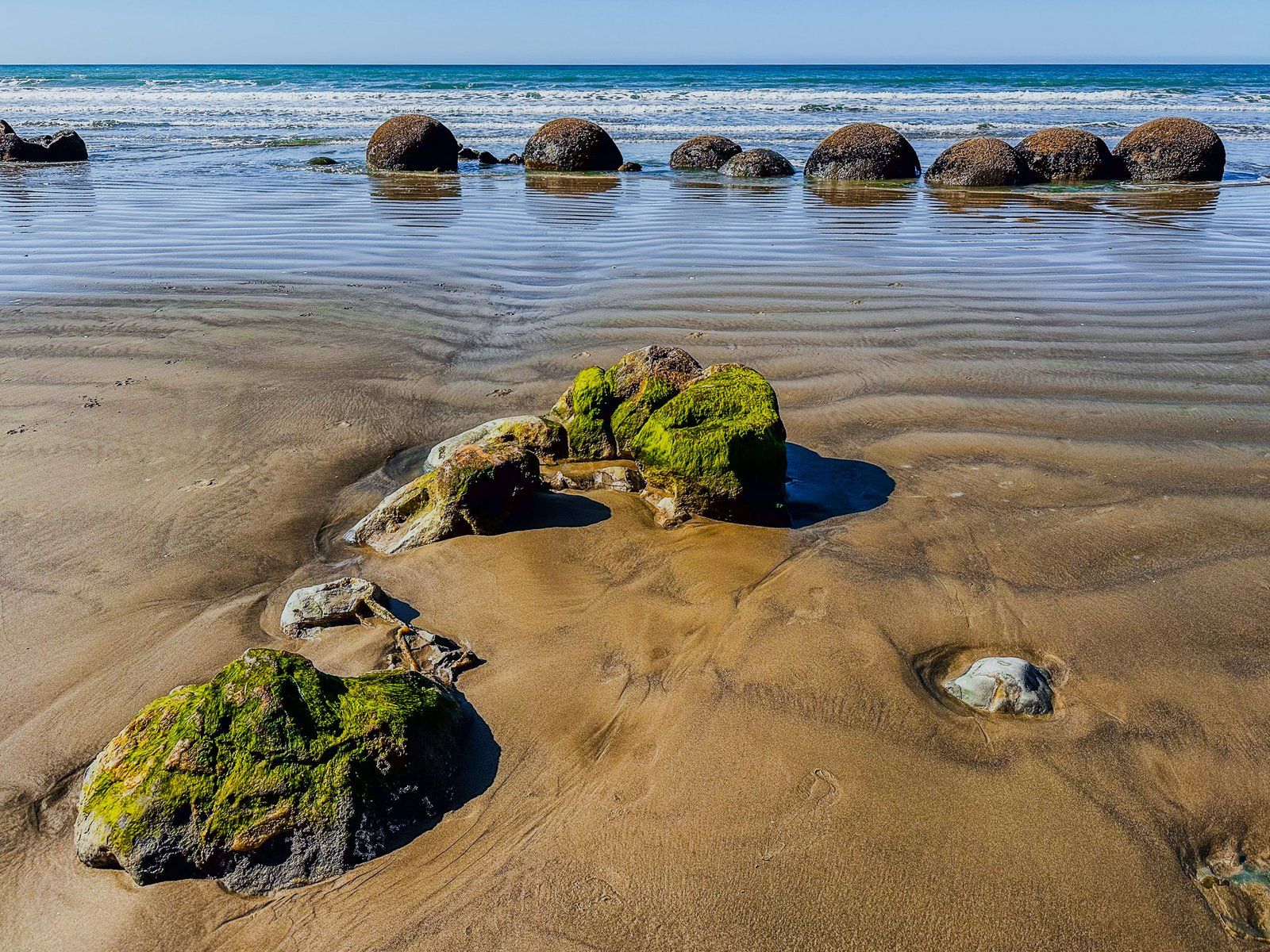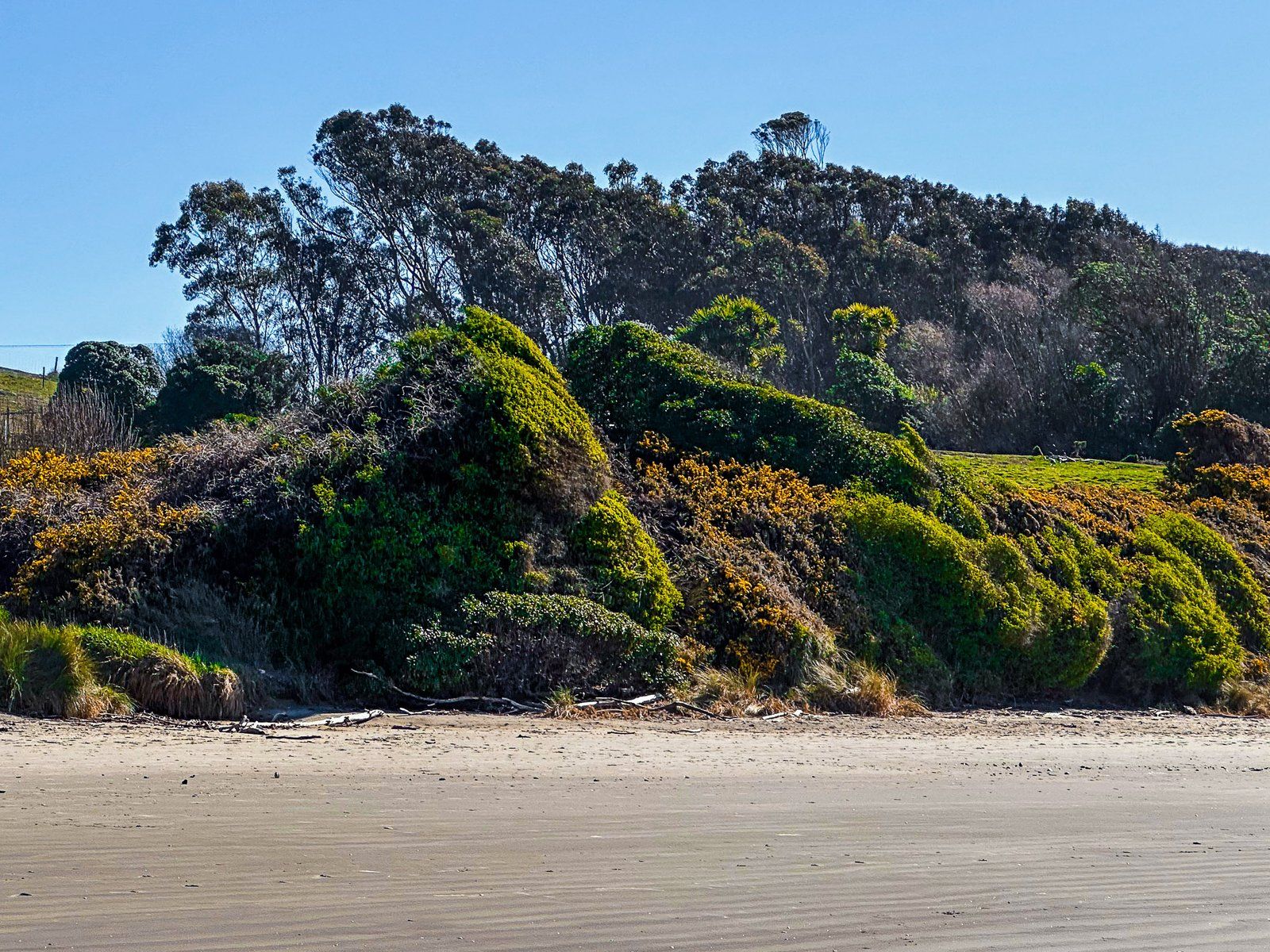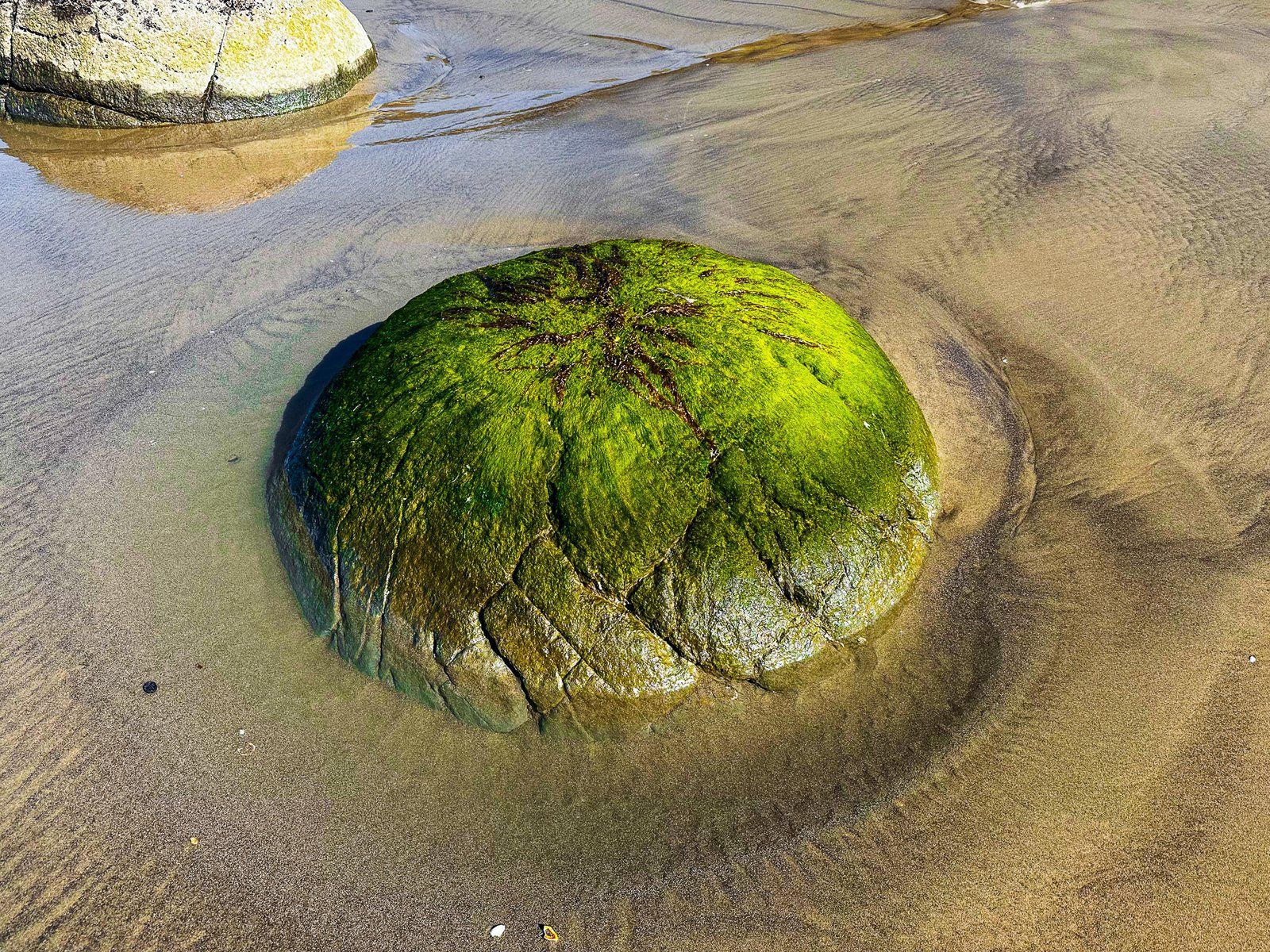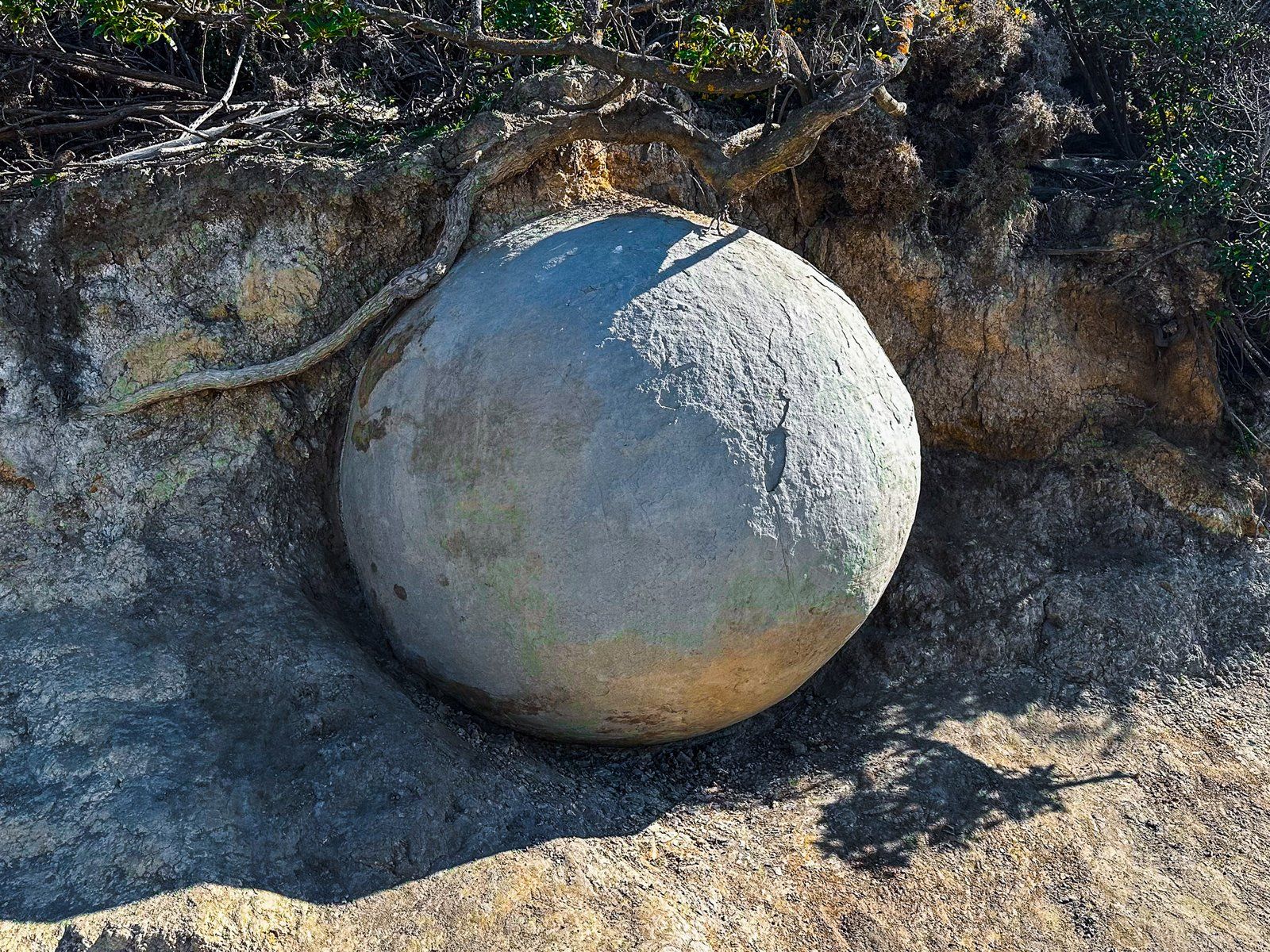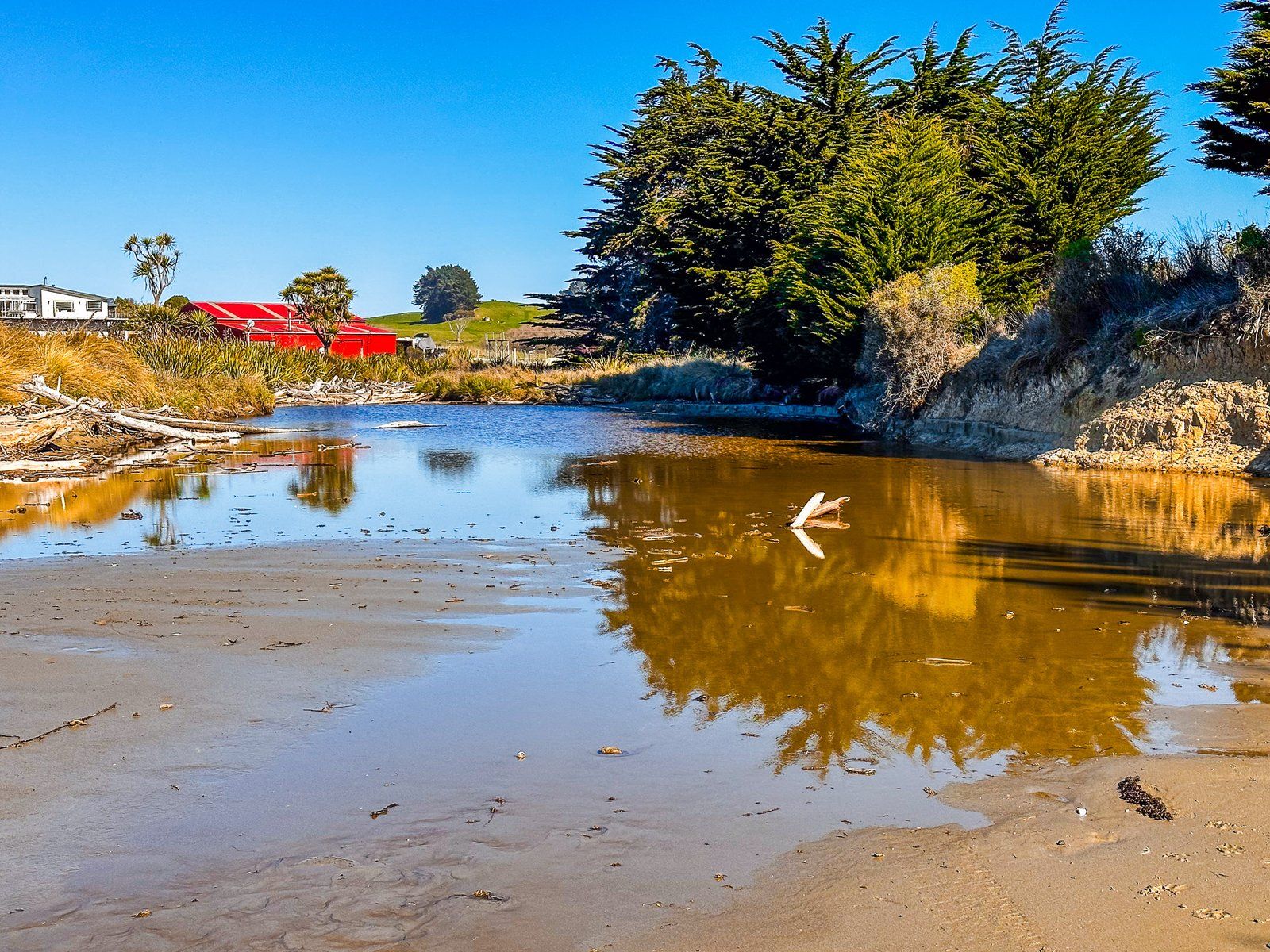Explore the Moeraki Boulders
The Moeraki Boulders are a must-see attraction on the North Otago Pacific Coast, located along State Highway 1 between the small towns of Hampden and Moeraki. These natural wonders are renowned for their unique spherical shapes and geological significance, making them a fascinating stop for travellers exploring the area.
Geological Marvels Formed Over Millions of Years
The Moeraki Boulders are large, spherical concretions formed by the cementation of calcites binding mud particles together on the Paleocene sea floor millions of years ago. This process allowed the boulders to grow over four to five and a half million years, with the largest reaching about two metres in diameter. As the softer mudstone cliffs erode, these harder concretions become exposed, revealing their distinctive netting-style cracks, known as septaria. These cracks fill with brown and yellow calcites, creating colourful patterns on the boulders' surfaces.
Māori Cultural Significance
In Māori tradition, the boulders are known as Kaihinaki. According to legend, they are the remains of kumara from the wreck of the waka Arai-te-uru at nearby Shag Point. The netting-style septaria in the boulders are said to represent the fishing nets of the waka.
Other Concretions and Nearby Attractions
While the Moeraki Boulders are the most famous, similar concretions can be found further south on Katiki Beach, although they are not spherical. Other notable locations with similar formations include Whitecliffs in the Manawatū, where the Rangitīkei River has exposed concretions, Ward Beach in Marlborough, and near Koutu Point on the Hokianga Harbour.
How to Get There
To visit the Moeraki Boulders, travel along State Highway 1, where you will find a signpost approximately halfway between Moeraki and Hampden. The main access is through the Visitor Centre, which features a tourist shop and café. Alternatively, you can park further south and walk about 500 metres north along Moeraki Beach to reach the boulders. The best time to visit is during low tide, as many boulders are submerged at high tide.
While you are in the area, a short drive to Katiki Point via Moeraki takes you to a historic lighthouse and pā site, seal colony, and the chance to spot the rare hoiho (yellow-eyed penguin).
